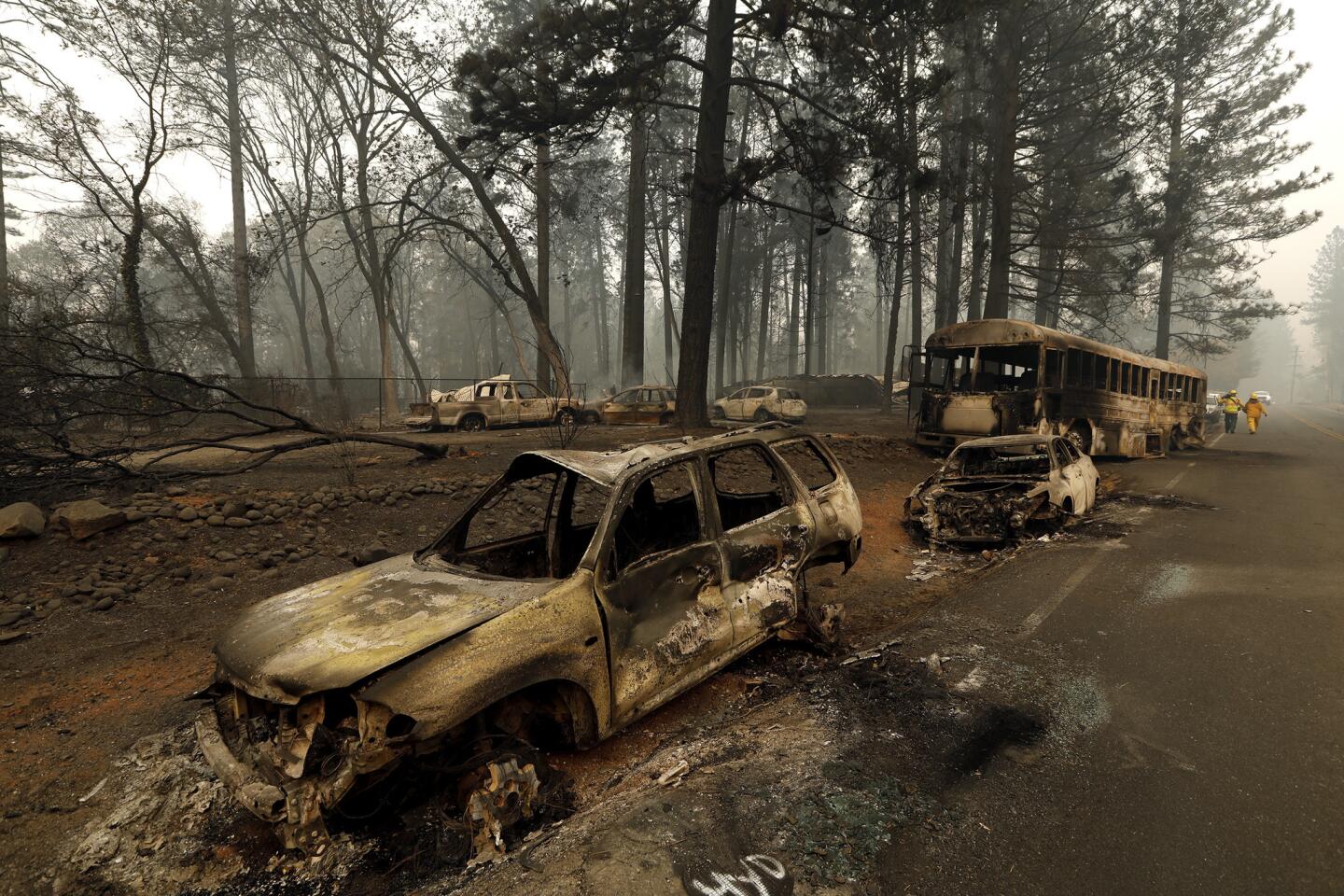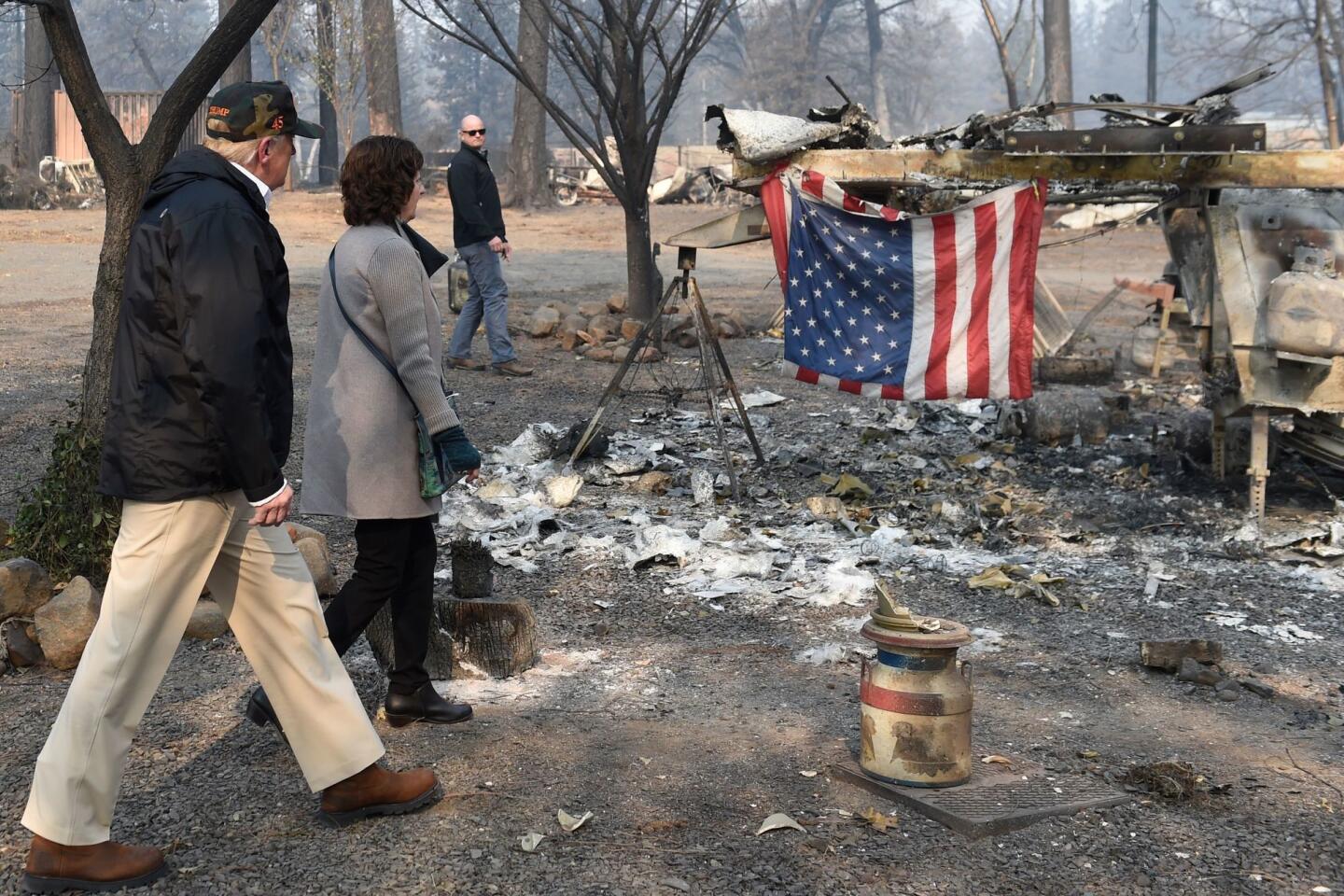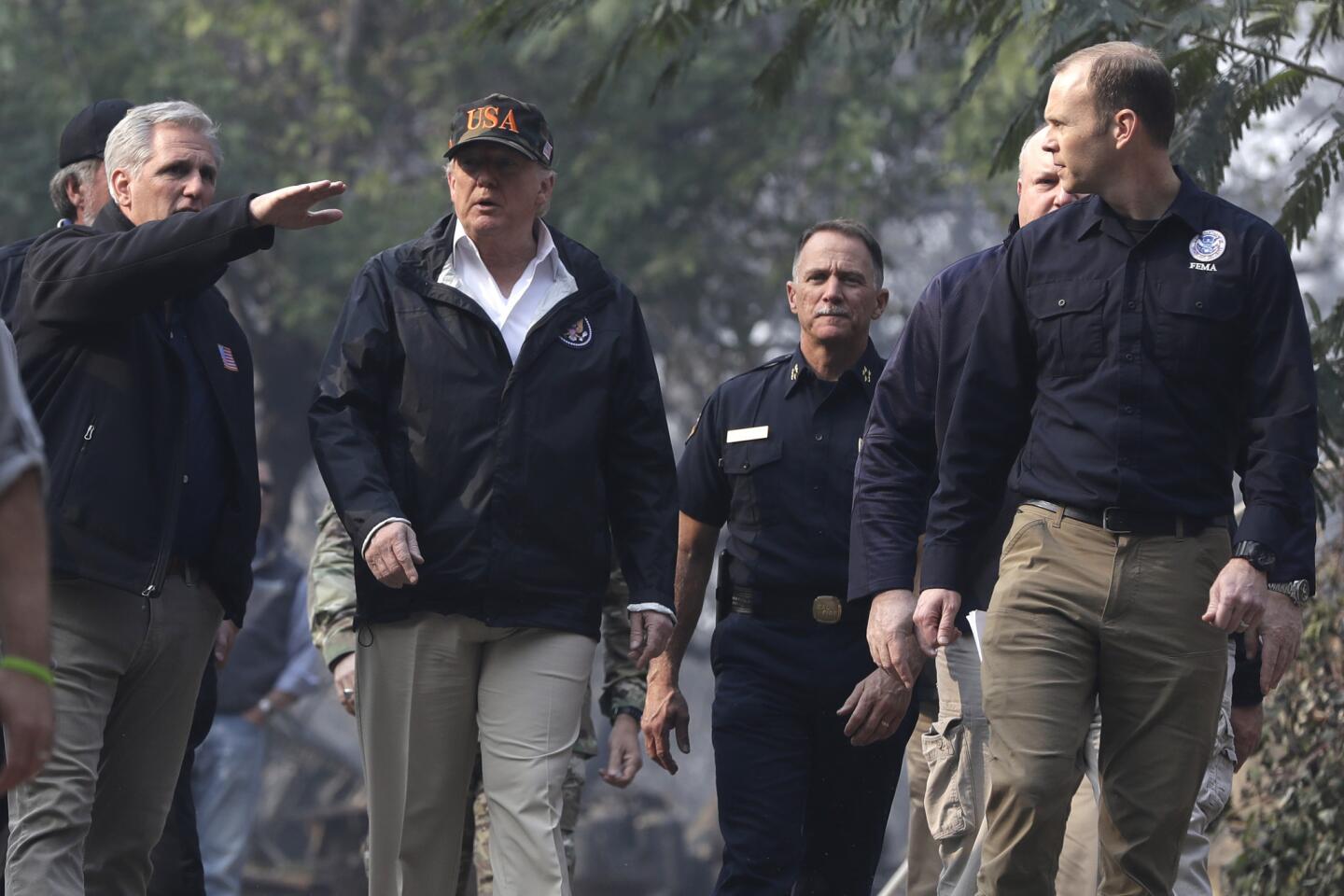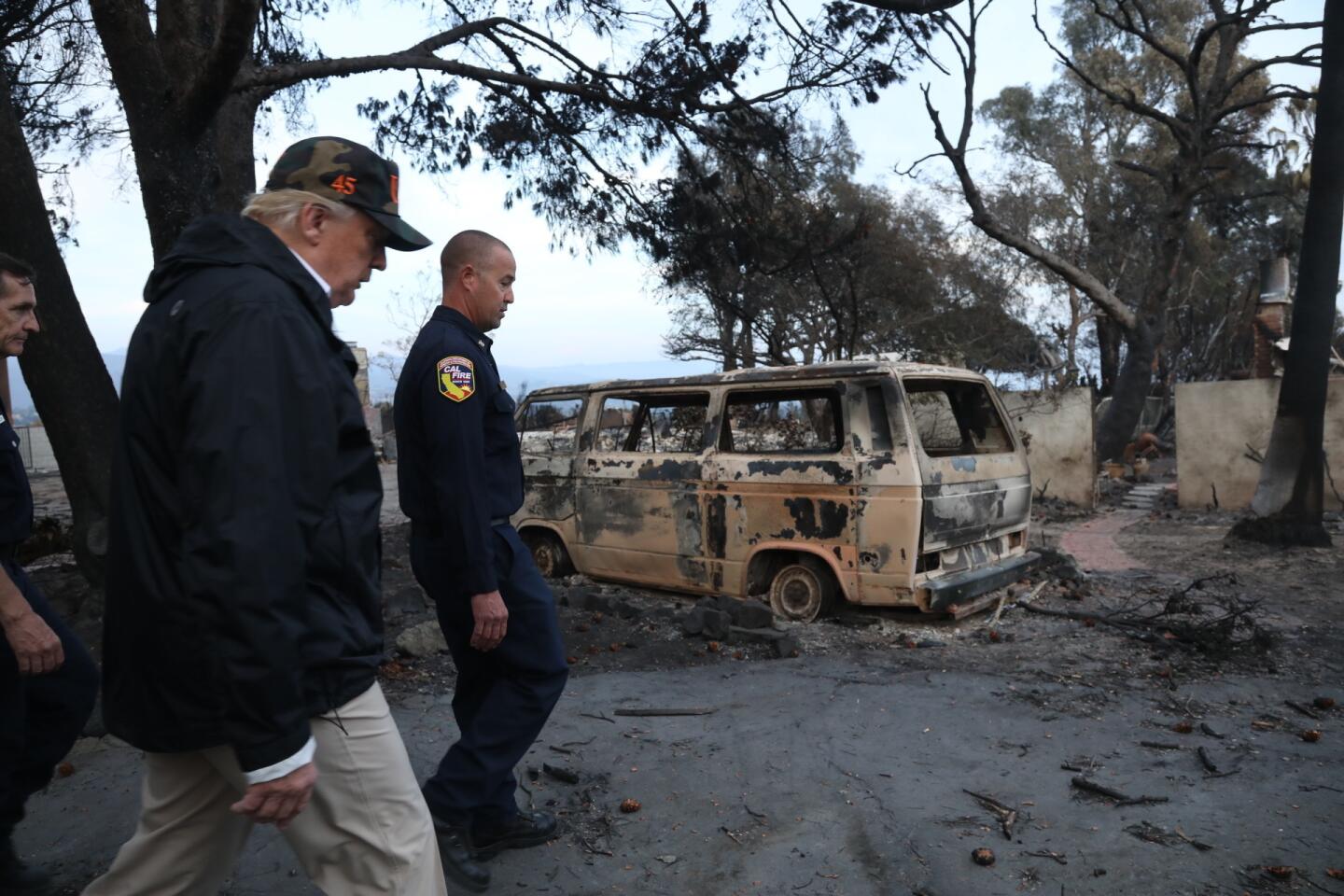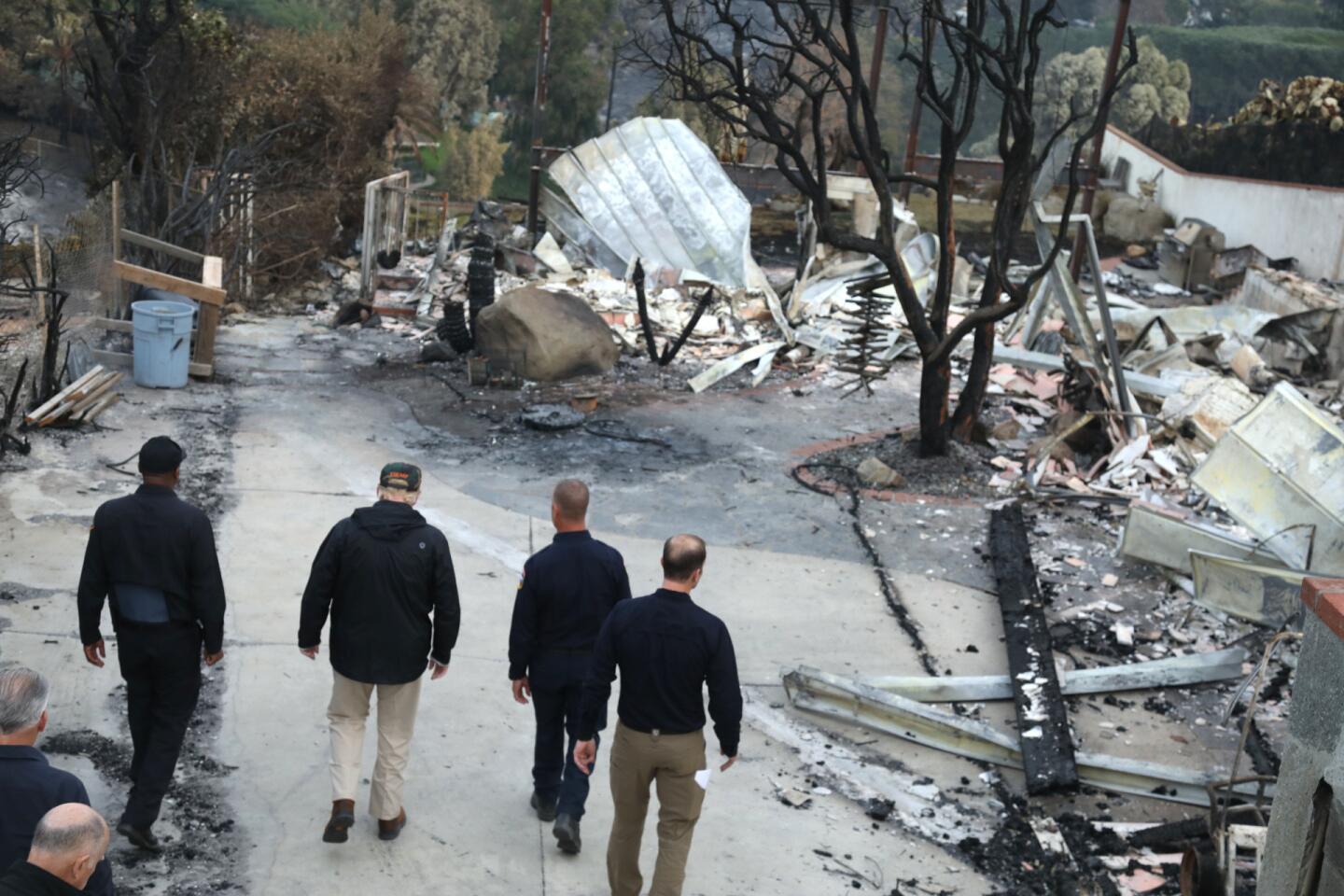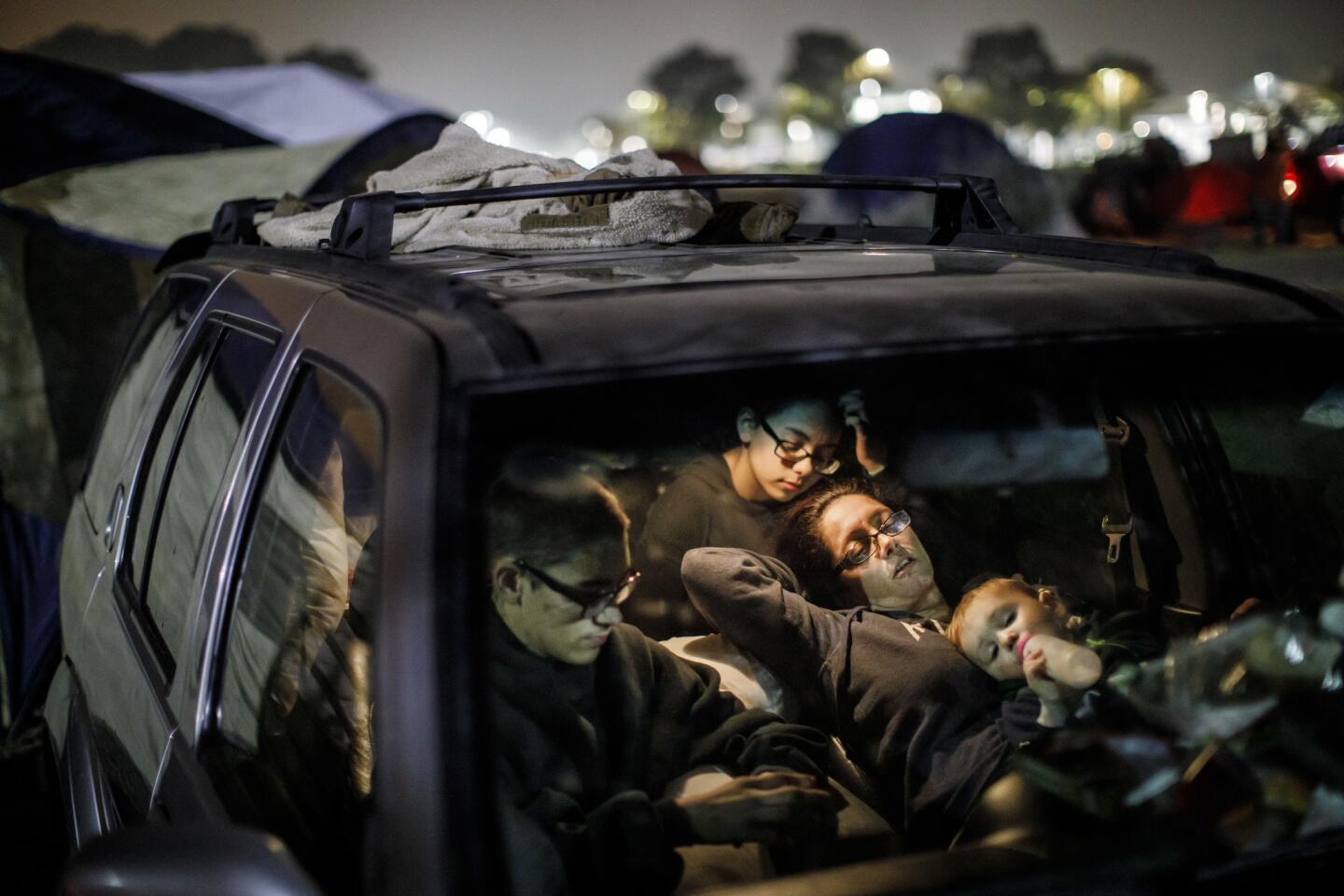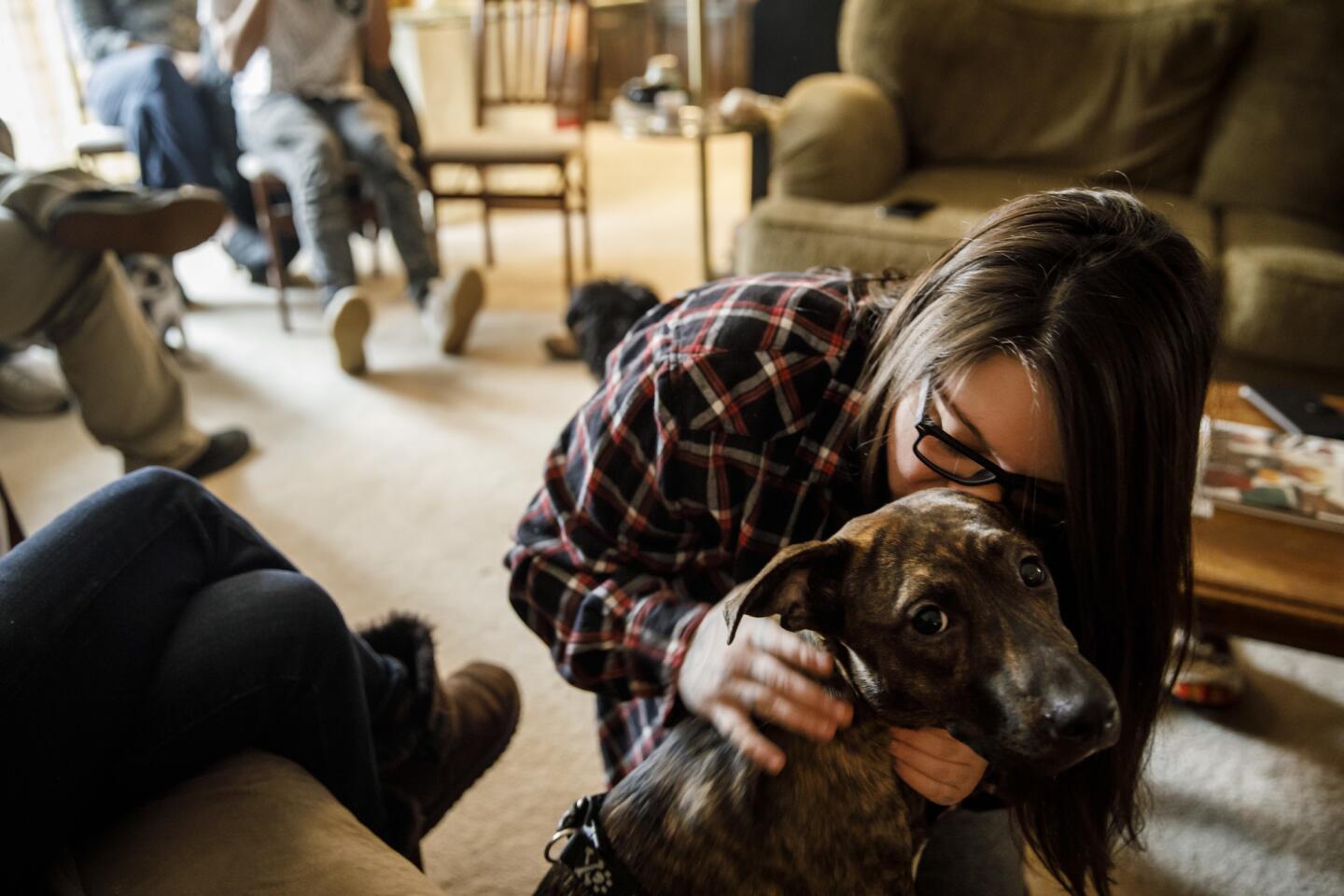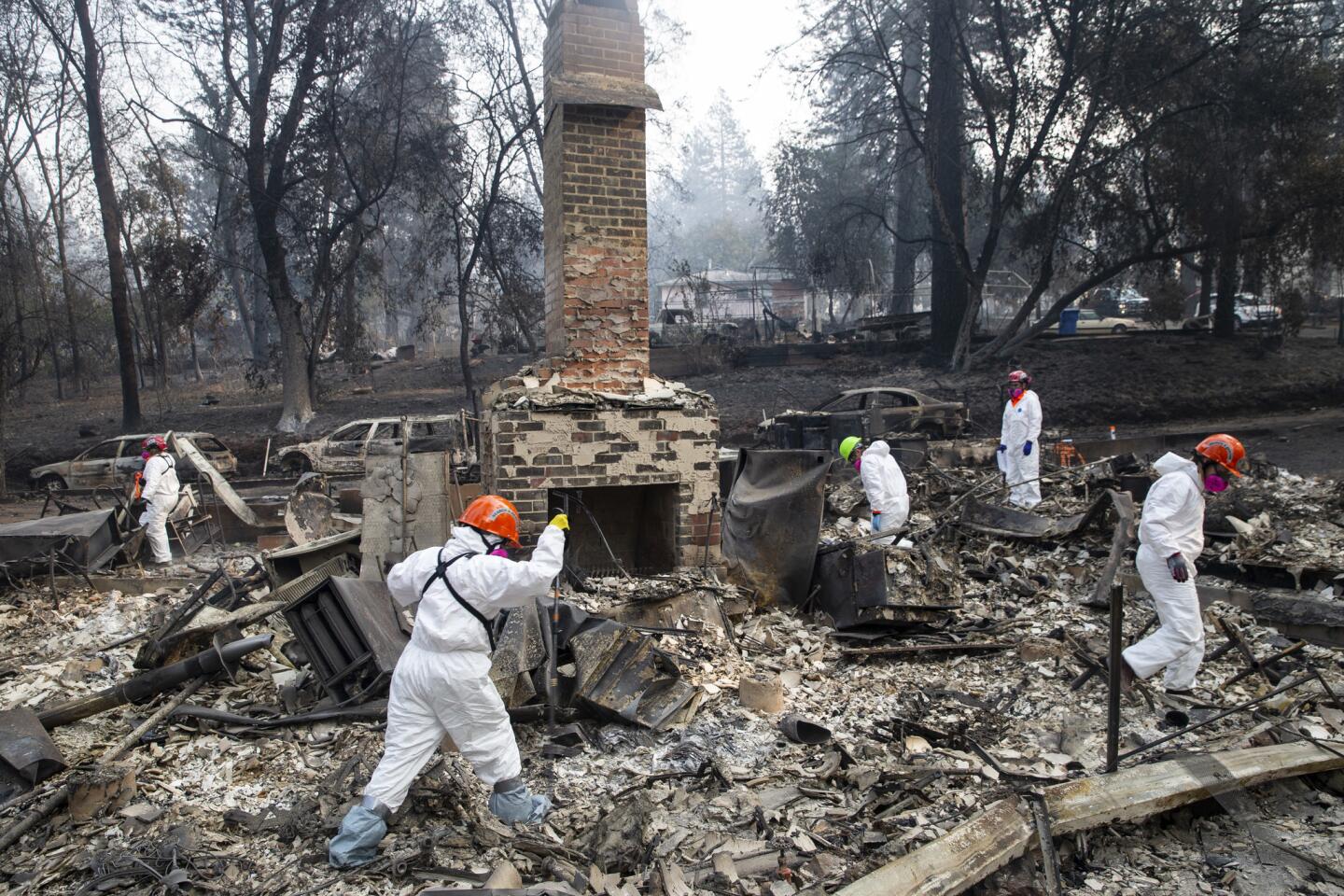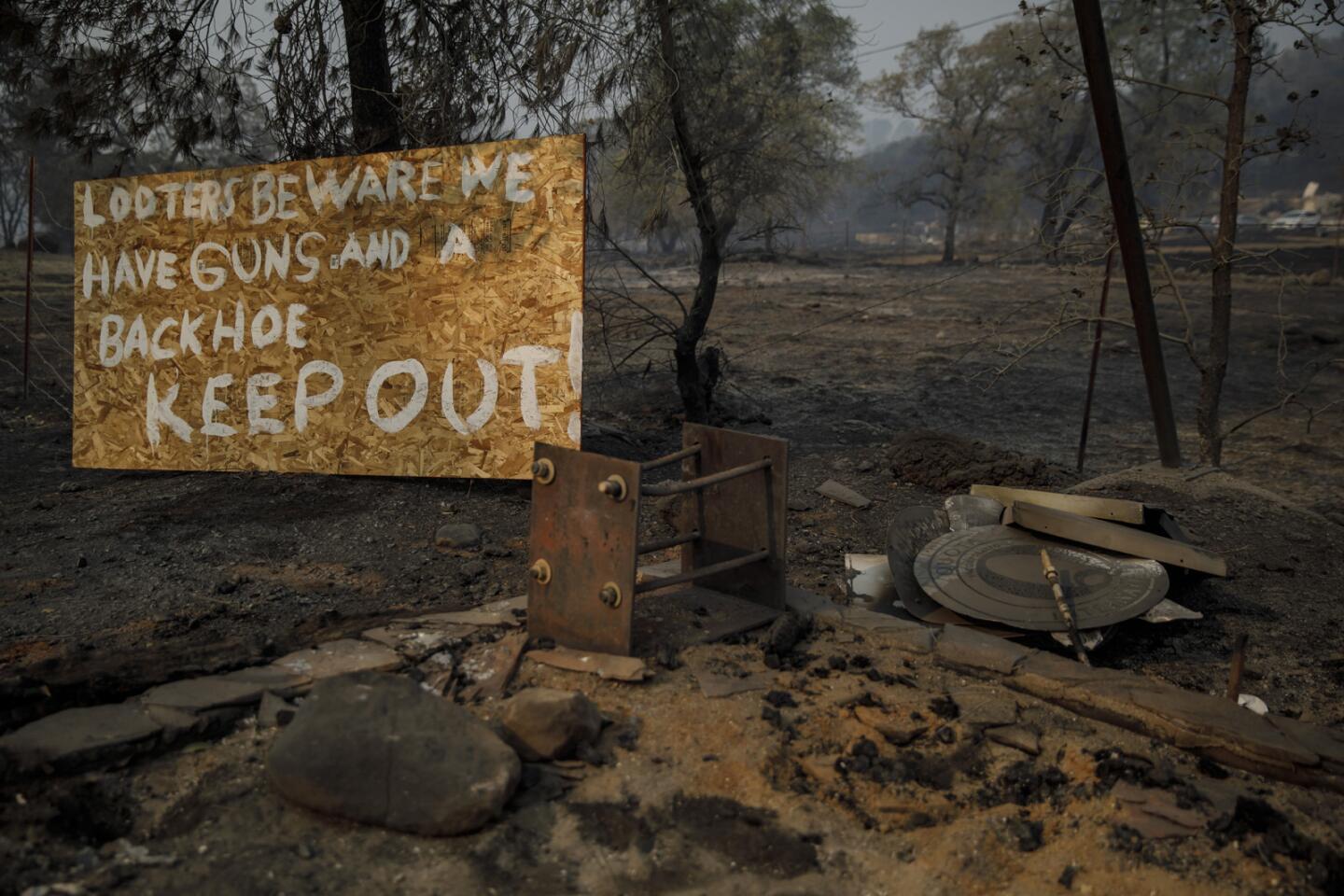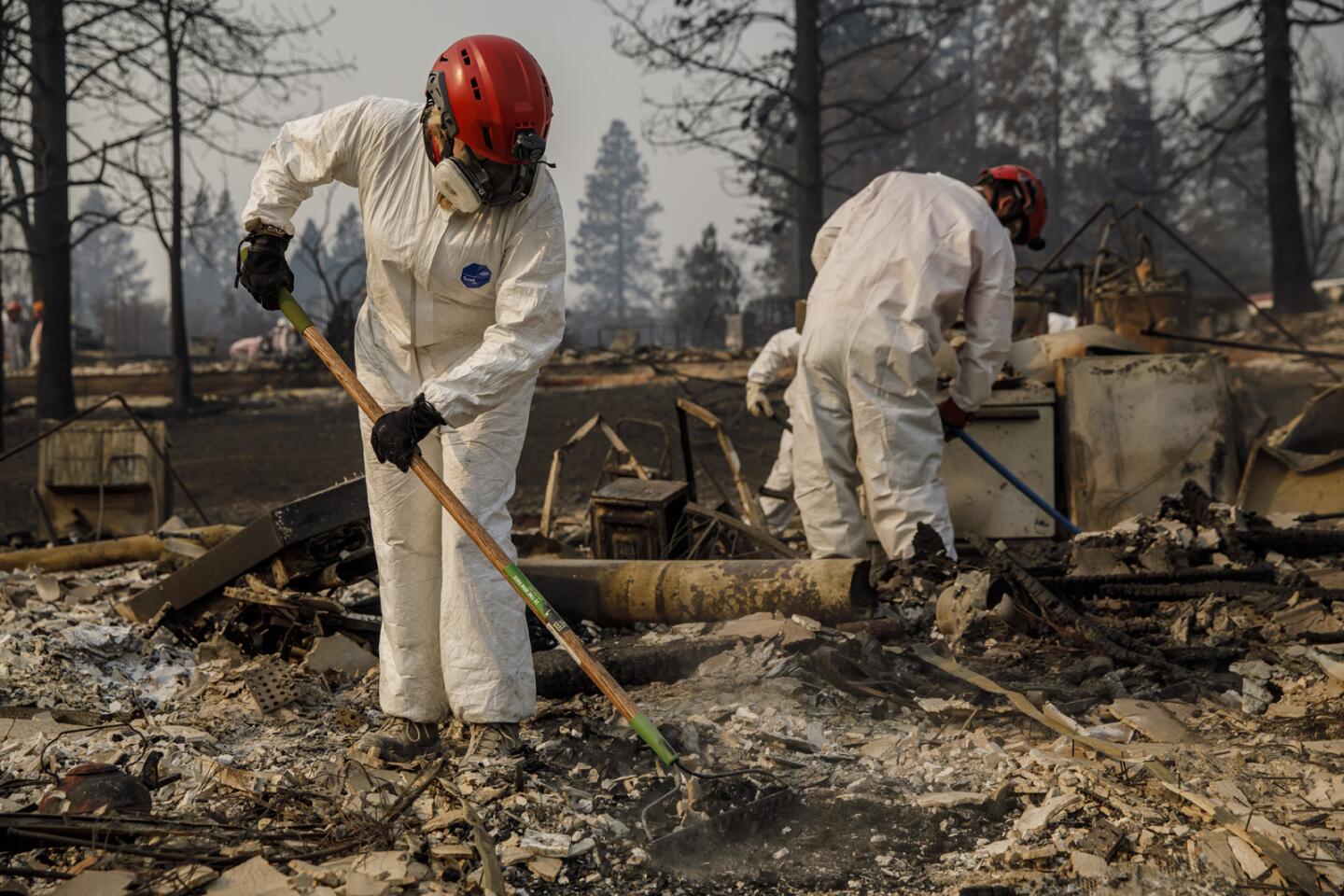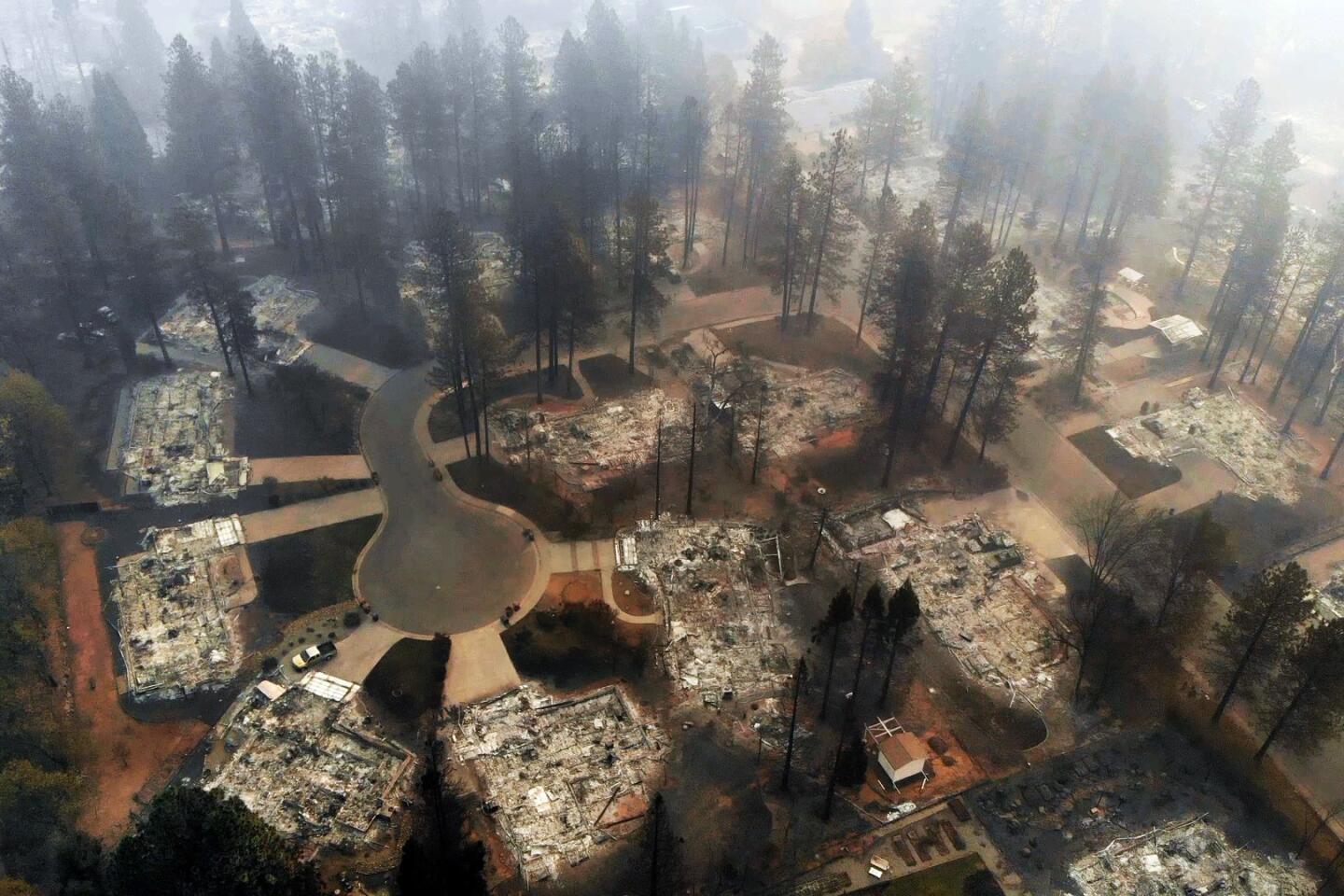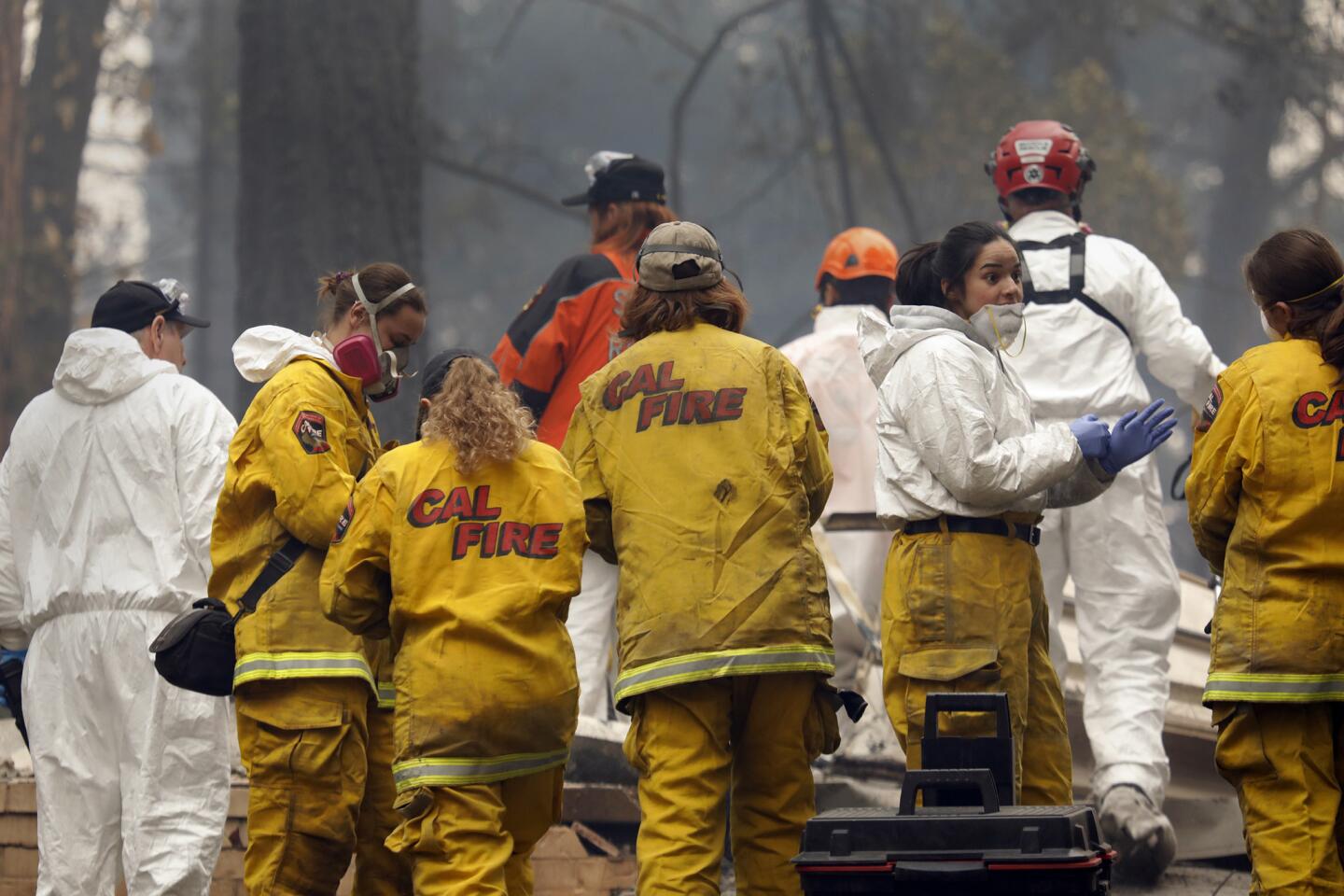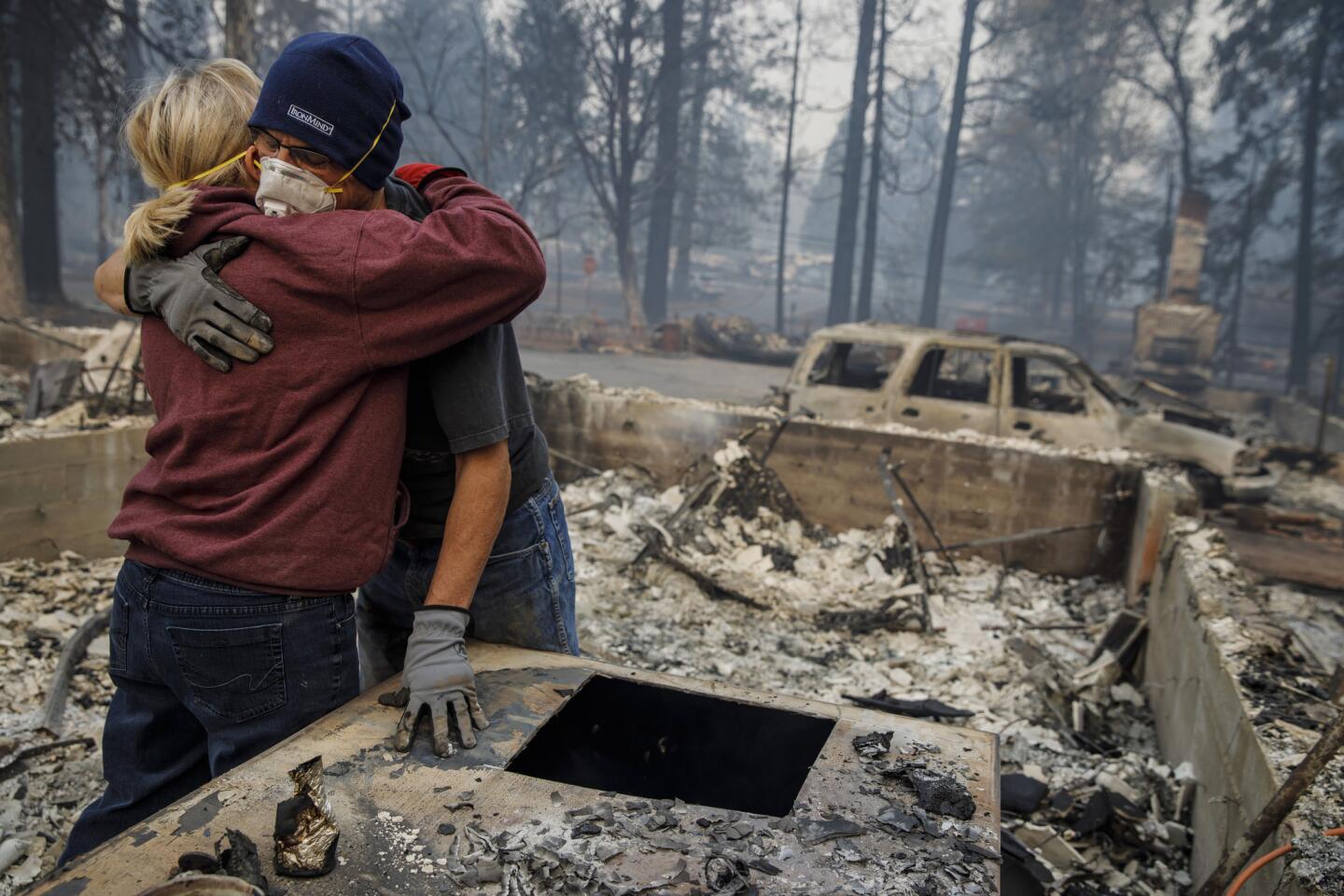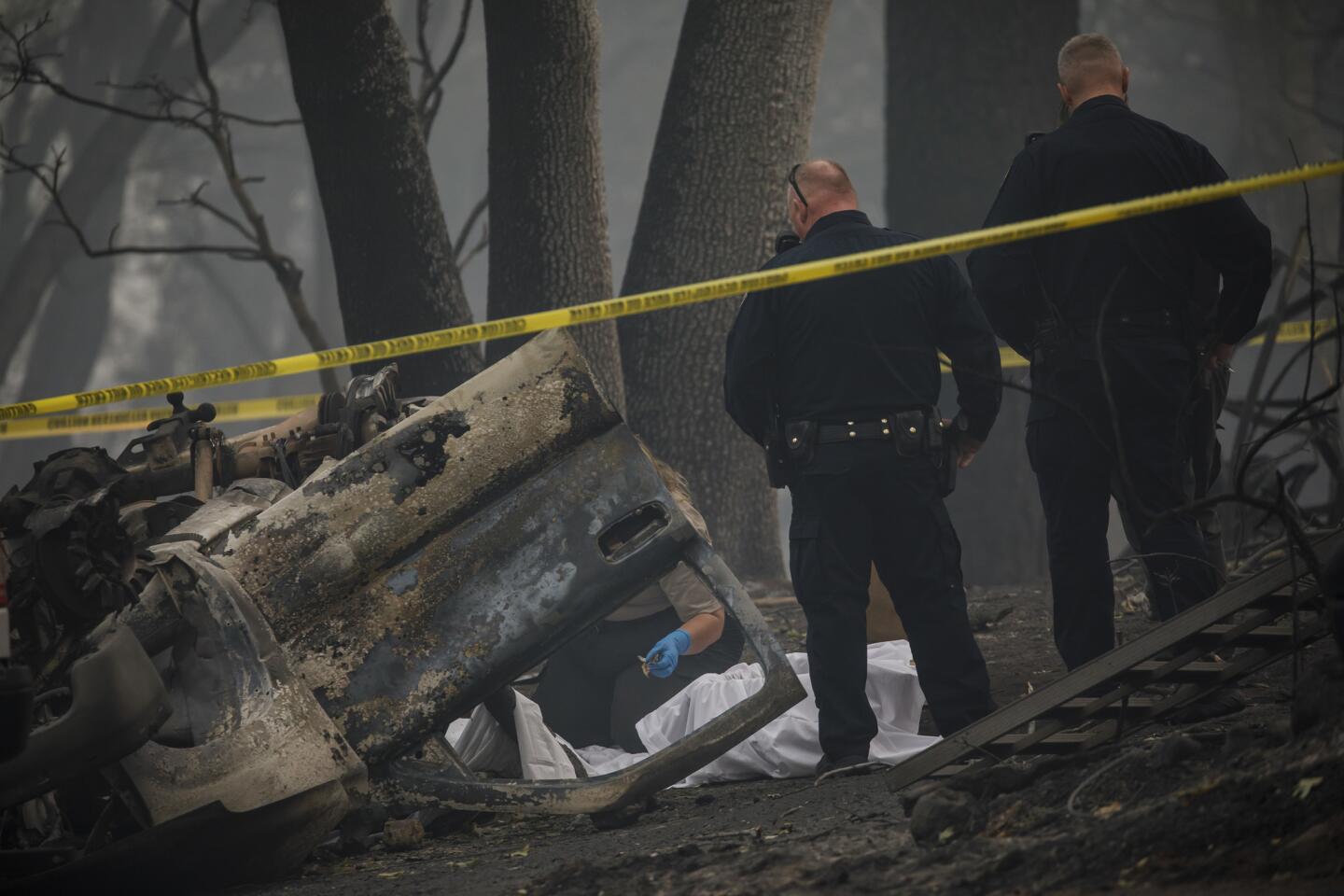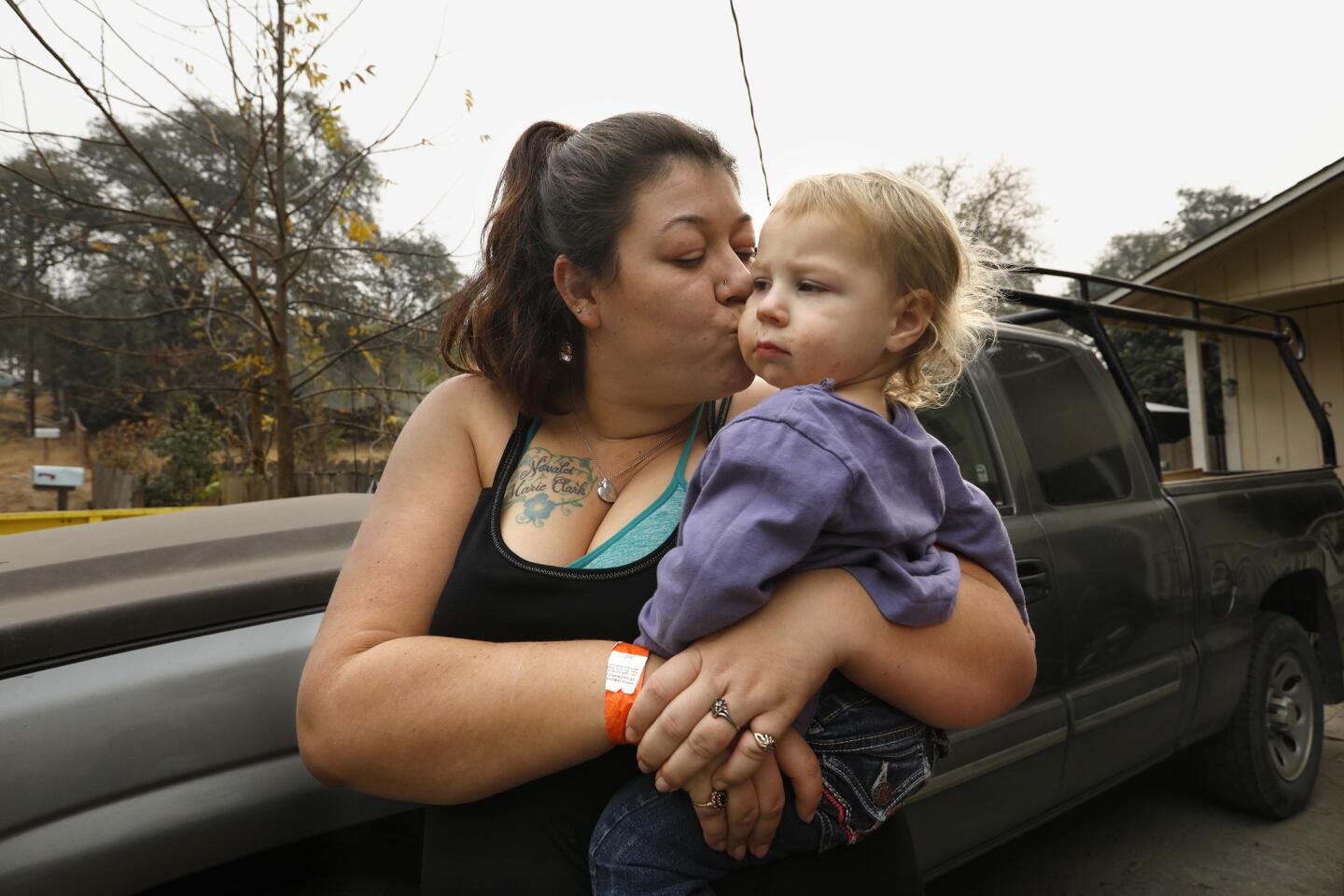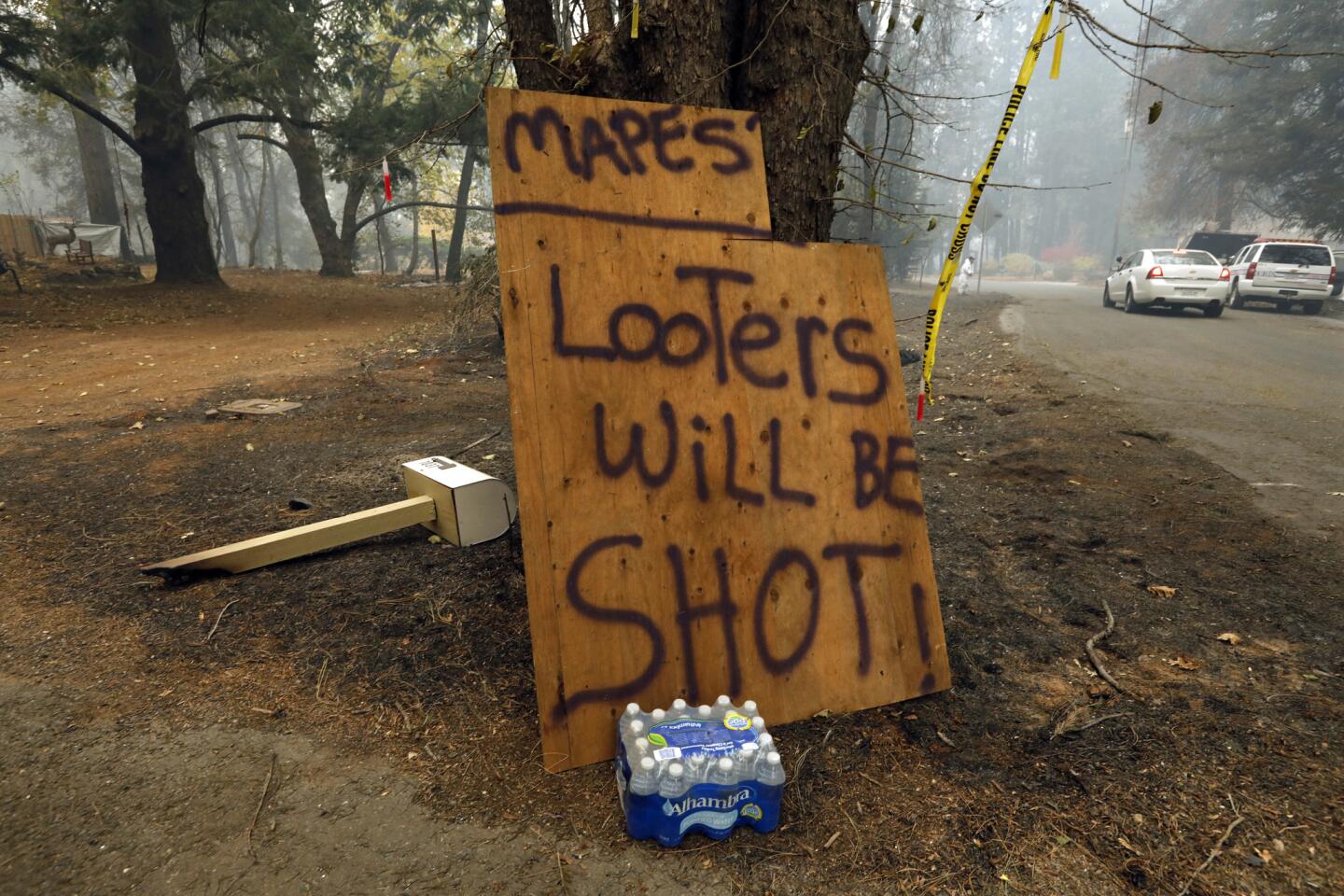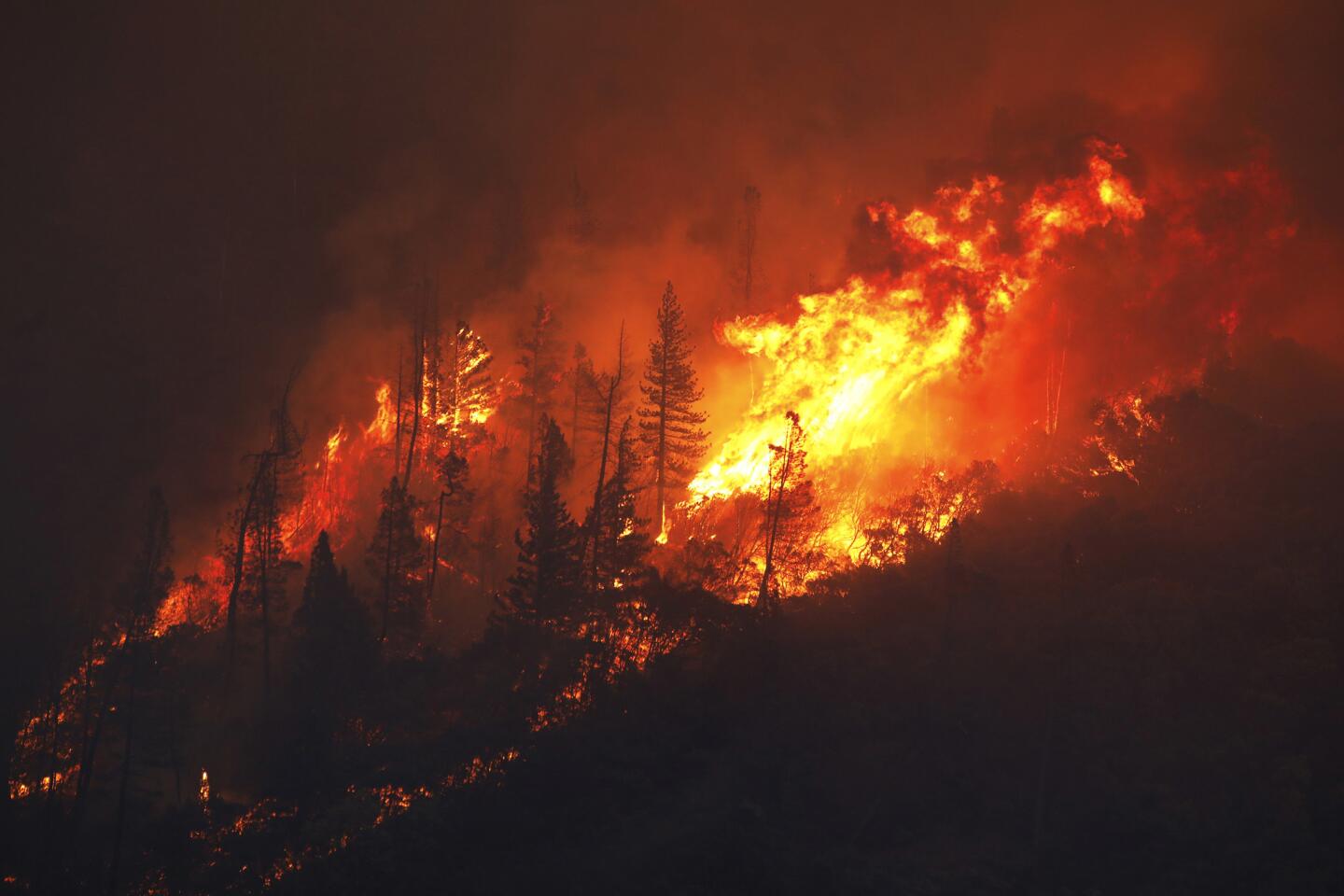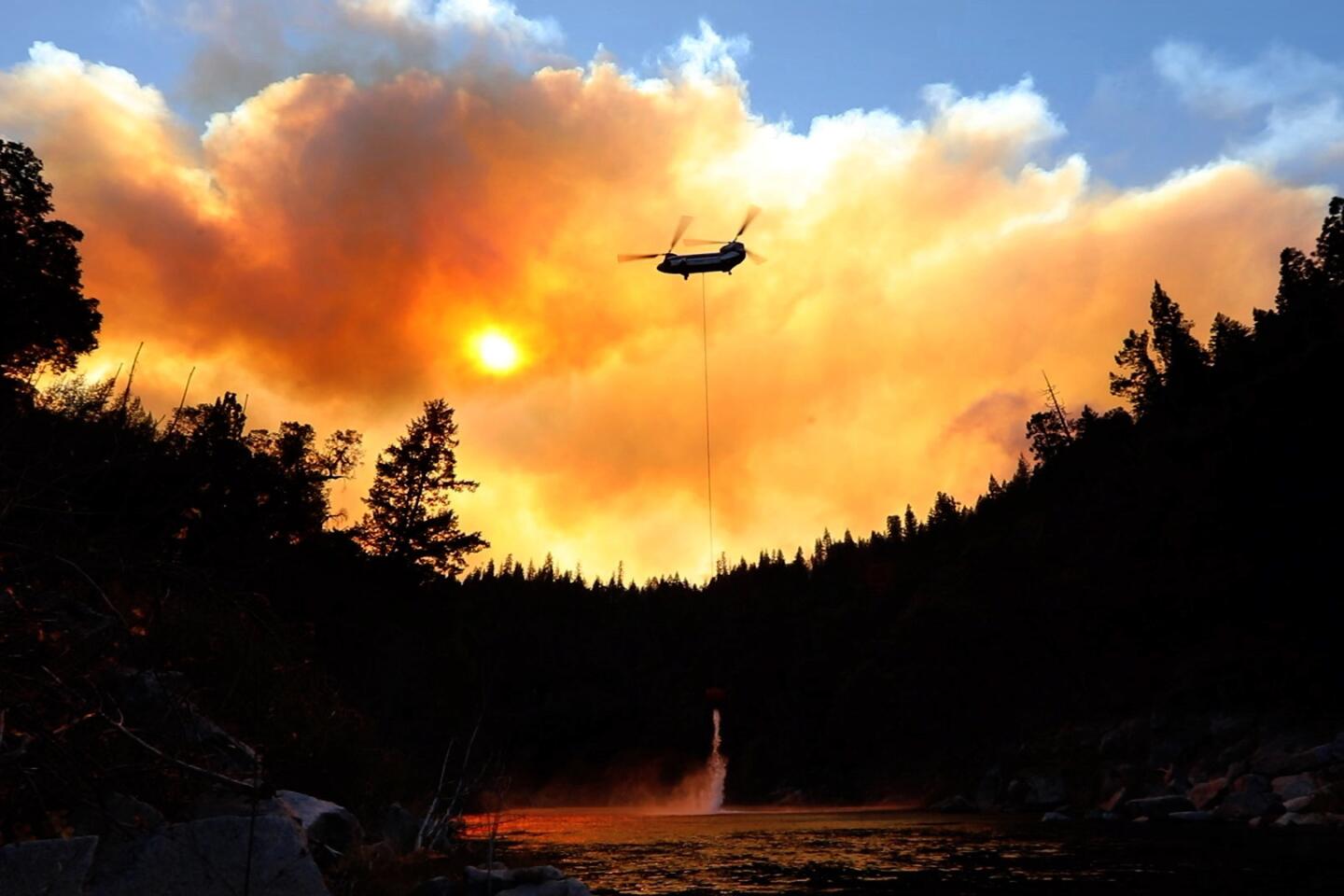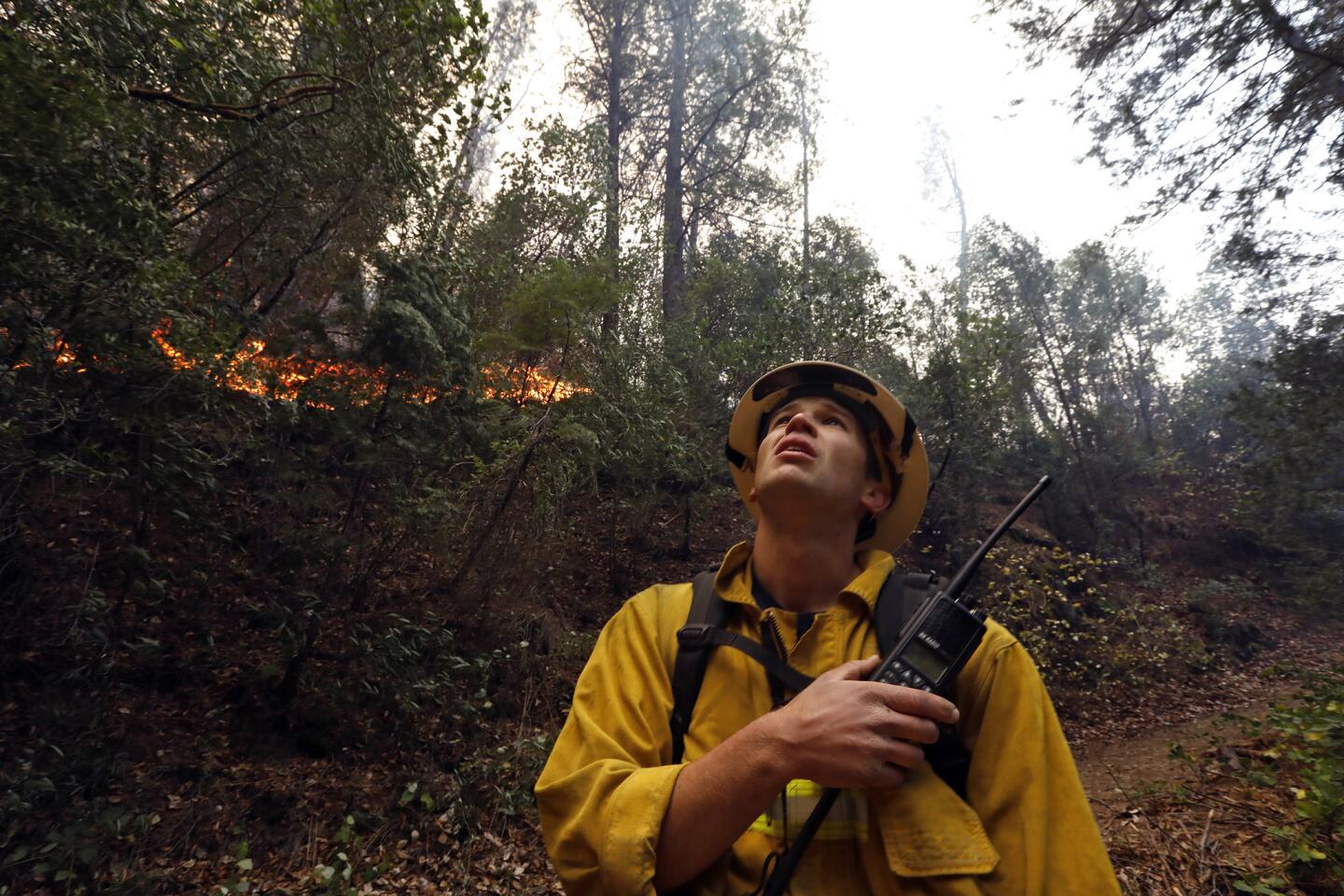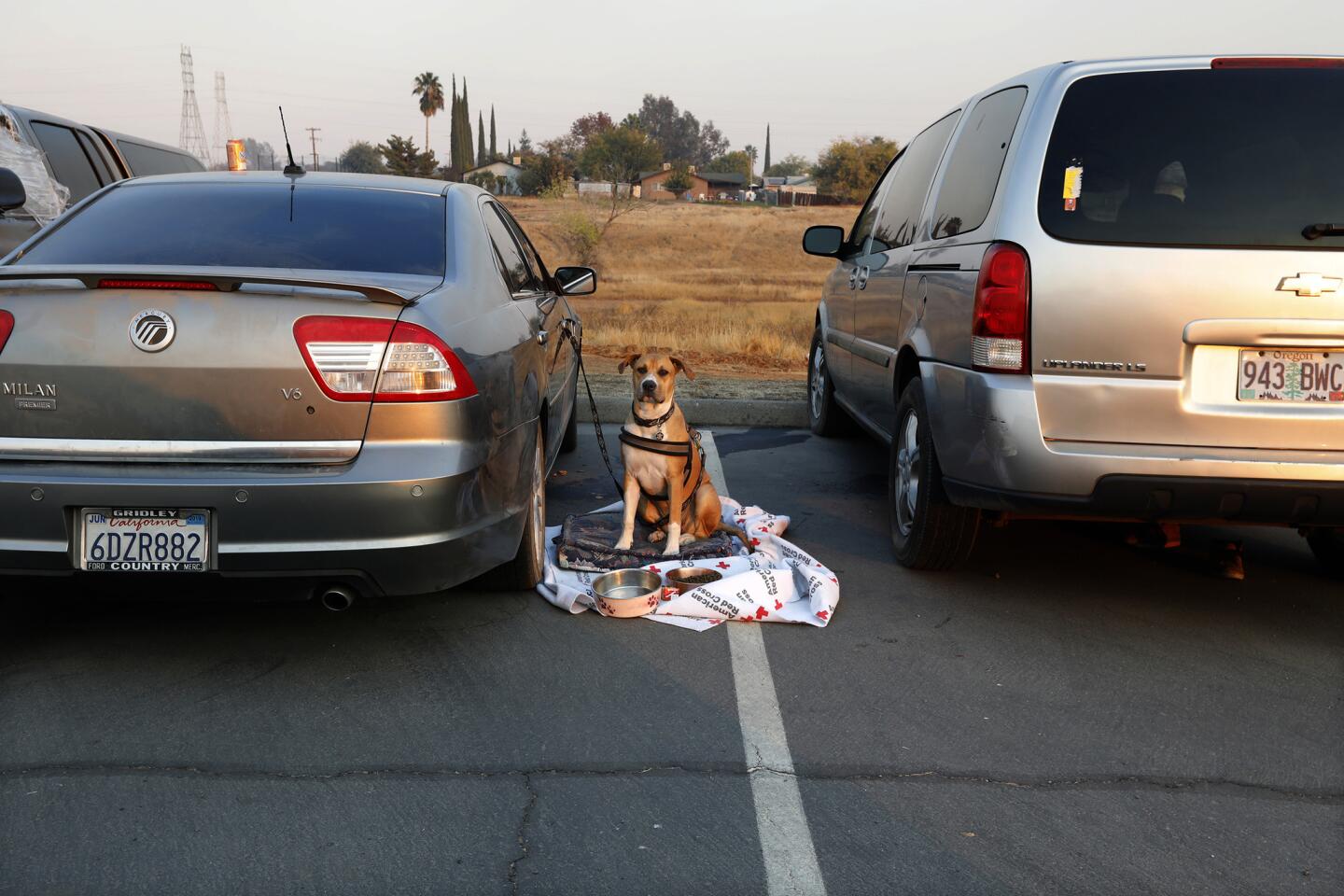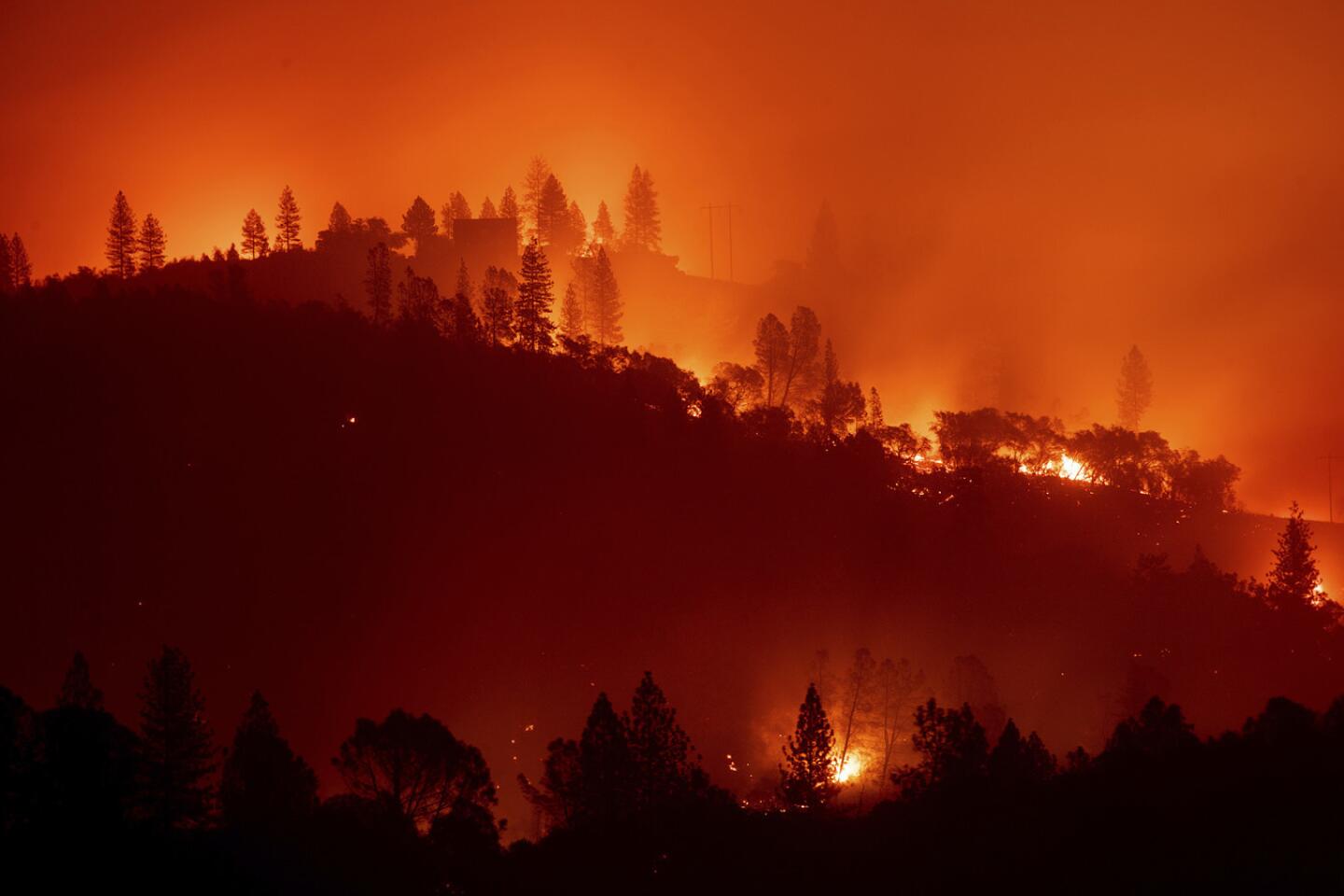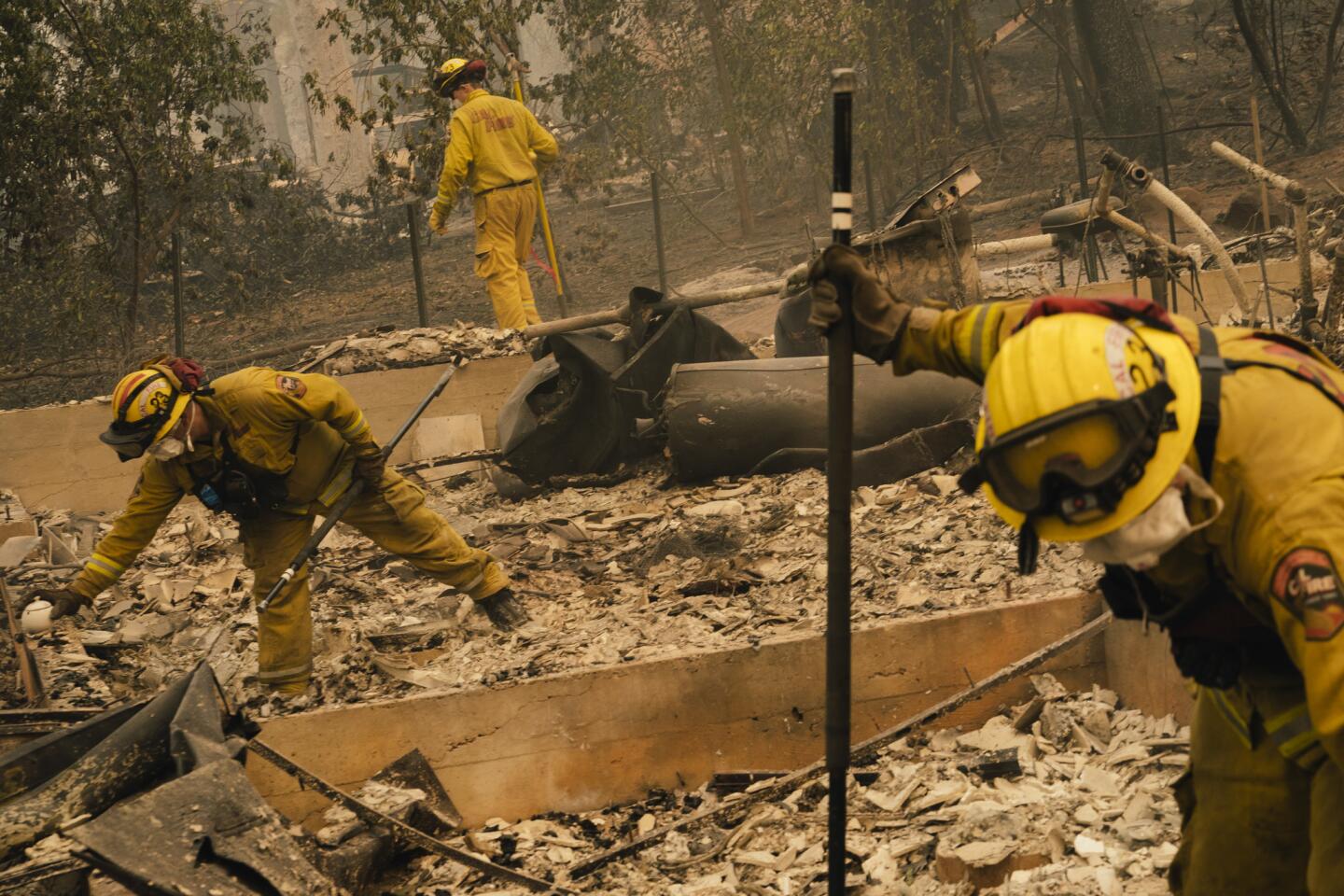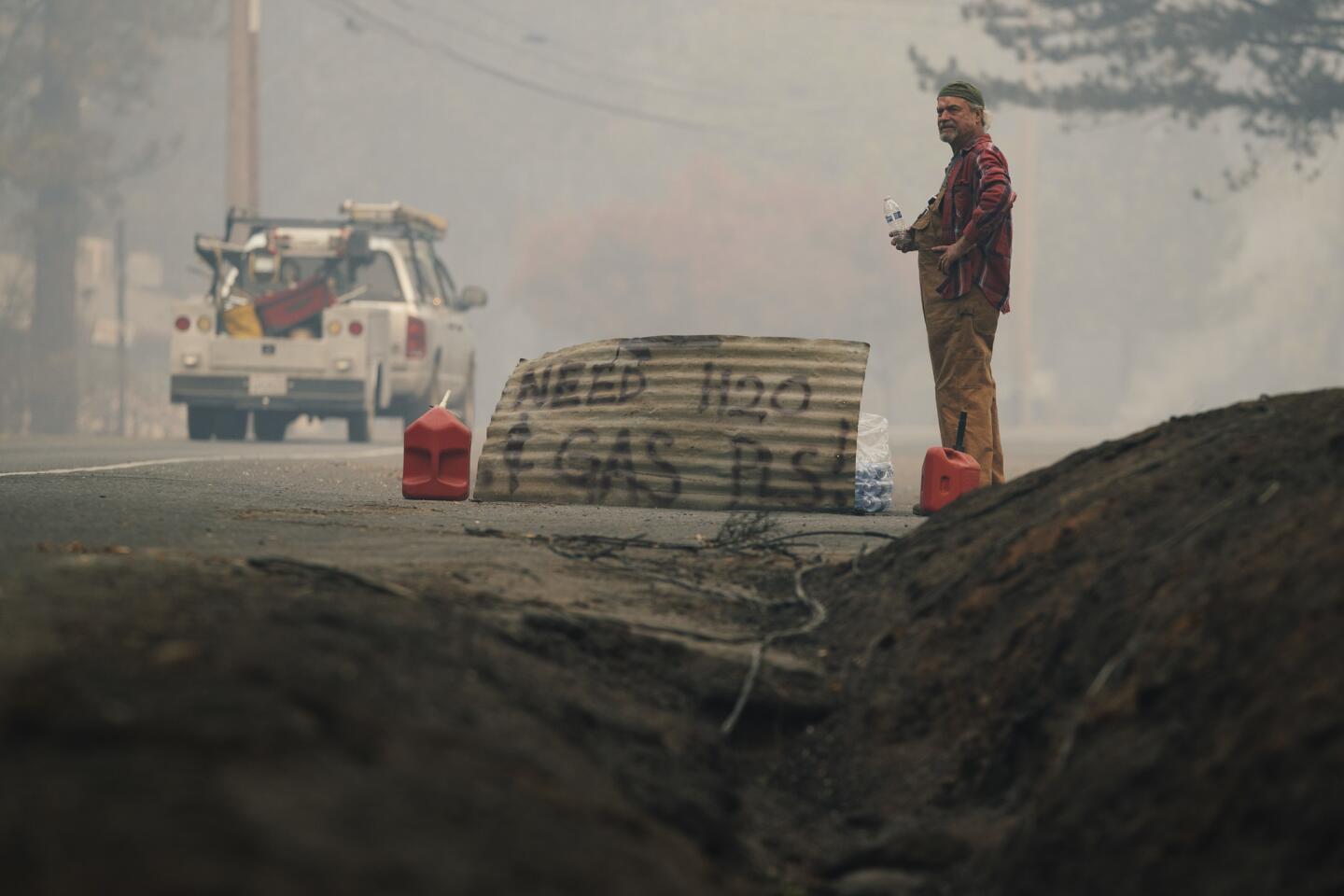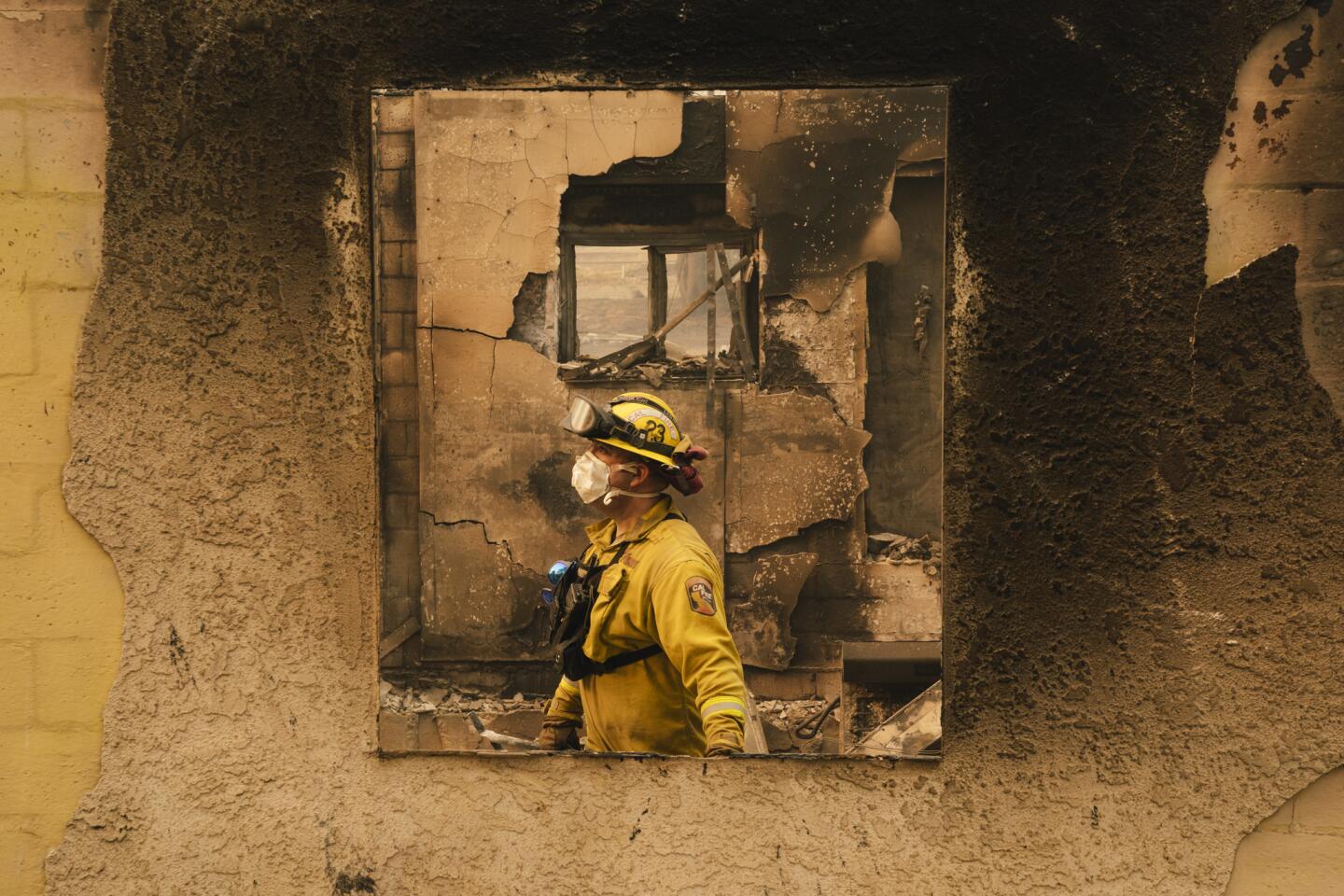The Camp fire burned homes but left trees standing. The science behind the fire’s path

- Share via
Reporting from Paradise, Calif. — Driving toward Paradise on the afternoon of Nov. 8, Jonathan Pangburn was less worried about the flames burning through the forest than he was about the smoke. Black and thick, it billowed over the road like a dangerous fog, cutting visibility to less than three feet in places.
A member of the incident management team with the California Department of Forestry and Fire Protection, Pangburn knew the signs. Gray smoke meant vegetation. Black smoke meant homes, possibly entire city blocks. The Camp fire was no longer just a wildland fire.
“It was an urban conflagration,” Pangburn said. “It was structure-to-structure-to-structure ignition that carried the fire through this community.”
Located in the Sierra foothills at an elevation that favored Ponderosa pines, Paradise might have seemed susceptible to the ravages of a forest fire. But what Pangburn realized is that the Camp fire had changed its character upon entering the town — and in that revelation lay the hope for preventing tragedies such as this from happening again.
Fires that spread from house to house generate a force of their own. Embers, broadcast by the wind, find dry leaves, igniting one structure then another, and the cycle is perpetuated block after block. Break that cycle and the fire quits, and destruction can be minimized.
Paradise, though, never had that chance. Defensible space and hardened structures could not have kept the firestorm, carried on gusts clocking in the low 50s and feeding on the homes and low-lying vegetation, from reducing the town to ash.
Most telling were the trees. Most of the pines that sheltered this community still had their canopies intact. The needles, yellowed from the intense heat, were not burned — evidence that the winds that morning had pushed the fire along so fast it never had a chance to rise into the trees. But as a surface fire, it lit up the homes that lay in its path.
“I don’t know if there was anything that could have been done to save Paradise,” Pangburn said. “It was some of the most intense fire behavior that I have ever witnessed.”
Deadly California fires prompt bold thinking about prevention »
More than a week later — with 79 fatalities and some 700 still missing, more than 10,000 homes destroyed and 150,000 acres consumed — Pangburn says there is opportunity in this destruction.
“The Camp fire has been the most destructive wildland fire in the state of California, and we don’t want to experience this again,” he said. “We have to learn from this so that no one else will have to suffer through such an inferno.”
Drawing lessons from tragedy is never easy, especially when those lessons have been known for years.
“Our problem is a society that is unintentionally, but actively, ignoring opportunities because of the cultural perception of wildfire,” said Jack Cohen, who is retired from the U.S. Forest Service where he worked for 40 years as a fire research scientist.
That perception, he argues, is based on myth and fear and complicated by an ongoing narrative that attributes conflagrations like the Camp fire to such factors as climate change, overgrown forests and urban encroachment into rural areas.
Each has played a role in perpetuating and prolonging recent fires, but they needn’t be entirely solved to minimize losses. There are steps that can be taken to protect homes and communities, he said, steps that require cooperation and political will.
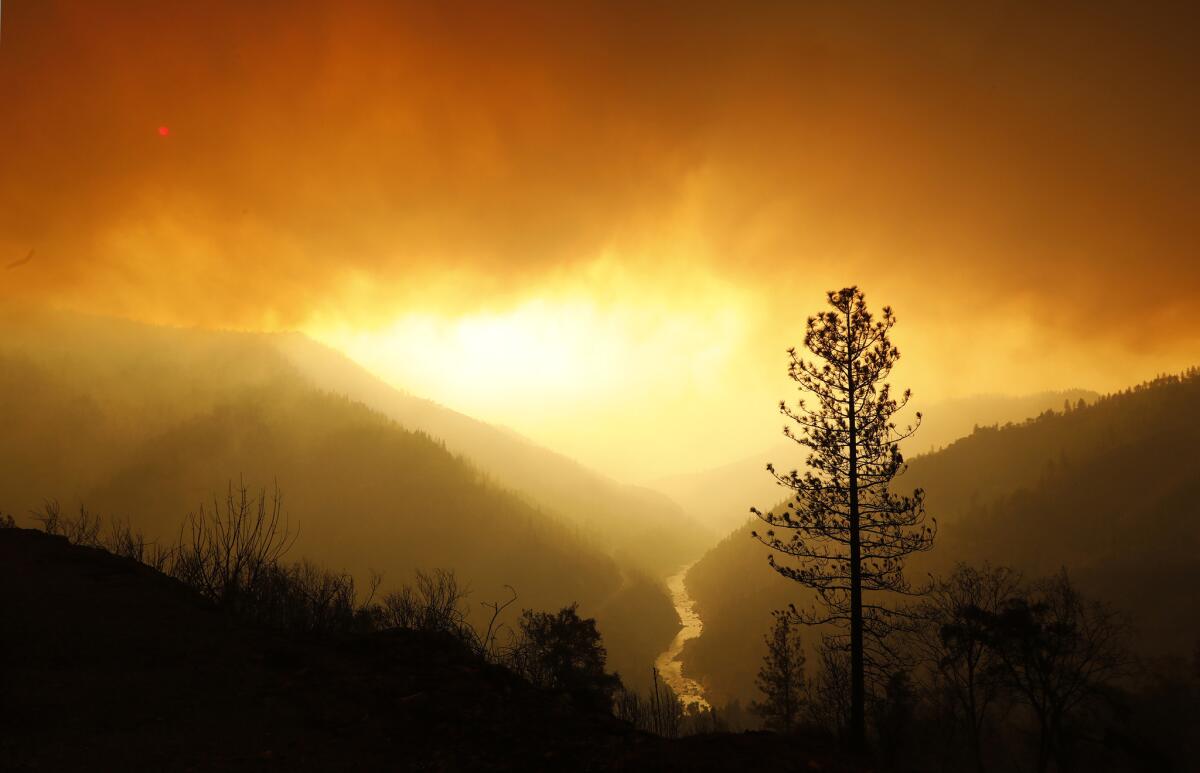
Demonizing wildfire
The first step, Cohen said, is to address the misinformation about wildland fires.
Over decades, Americans have become disassociated from the reality of fire. Smokey Bear was almost too successful in demonizing wildfire. There is a time and a place and a set of circumstances when fires are beneficial for the landscape.
But video of flames purling up canyon walls and photographs of firefighters standing as heroic silhouettes against a wall of orange flames perpetuate the belief that fire is both scourge and enemy. The reality is more nuanced.
“People see what they believe, and that prevents change to a readily available, effective approach to preventing these disasters,” Cohen said.
California fires: Trump administration now blames devastation on ‘radical environmentalists’ »
The phenomenon in Paradise that Pangburn described — the fire spreading from structure to structure, tree canopies intact — is not unique to the Camp fire.
Fire behaviorists have documented it throughout the West, most recently in the aftermath of the firestorms that ravaged Northern California last year.
In spite of this, the popular perception is that wildfires burn through these communities like a wall of flames. In fact, small, burning embers — firebrands — blown in advance of the fire are the primary cause of structural fires.
“When we look at the big flames but not the firebrands, we miss the principal igniter and pay attention to the show,” Cohen said.
Billions of these embers fly into neighborhoods, landing onto flammable roofs, into vegetation around the structure and rain gutters choked with leaves and needles.
Big flame fronts, on the other hand, are less effective in igniting structures because they burn fast — often consuming their fuels in about a minute or less in one location — and move along often so quickly as to not consume the structures themselves.
Yet in the face of increasingly severe and deadly wildfires throughout the country, Cohen maintains that it is possible to decrease the vulnerability of urban development in the face of these events.
“Uncontrolled extreme wildfires are inevitable,” he said, “but does that mean these disasters are inevitable? No. We have great opportunities as homeowners to prevent our houses from igniting during wildfires.”
Examining state fire codes
Pangburn’s assessment — that the Camp fire in Paradise was an urban conflagration, structure to structure — opens the door for fire behaviorists to consider the strengths and weaknesses of the state’s codes for protecting property in fire-prone, rural environments.
The mandate in California, as stated in Public Resources Code Section 4291, is clear: A 100-foot perimeter of “defensible space” must be maintained in “land that is covered with flammable material.”
While the 100-foot requirement is appropriate, it is important to begin thinking closer to the structure itself and work out in concentric circles, Cohen said.
“We have to take care of everything from five feet out,” he said, “so that when it burns, it doesn’t produce enough radiation to ignite the structure or produce enough flames to contact the structure.”
Cal Fire’s photos of destroyed buildings are haunting »
The goal is to distinguish between structure fires and wildland fires and to understand that communities can be separated from wildland fire.
We don’t have to live in ammo bunkers, Cohen said, and we don’t have to entirely eliminate fire from within the perimeter, just ensure that fires that occur within 100 feet don’t burn long enough or intensely enough to ignite other objects.
A defensible perimeter also provides residents with more safety options as fire approaches.
Cohen refers to the story of the medical staff and patients from the hospital in Paradise who took refuge in a home. Climbing on the roof with hoses and clearing pine needles from the rain gutters, they were able to survive.
“A house that doesn’t burn is the best place to be during a wildfire,” he said.
However, the 100-foot requirement in California stops at the property line, which creates a situation where homes can be built beside one another within that perimeter.
If multiple homes share this perimeter, then each home is a potential ignition source, and homeowners cannot create a defensible space beyond their property line if that means trespassing on someone else’s property.
“All it takes is one house to catch on fire, and the heat and embers put the other houses in jeopardy,” Pangburn said.
Cal Fire is responsible for enforcing the requirements of 4291, but trying to inspect every property, spread out over a million acres, is a monumental task, Pangburn said.
Changing the social dynamic
If Paradise and the other communities destroyed by the Camp fire are to be rebuilt, then the conversation must address the role that neighbors play collectively in protecting themselves and their environment.
The physics of fire won’t change, Cohen said, “but the social dynamic can. It requires cooperation and planning.”
Paradise could not have been saved, but its lessons have the potential for helping other communities when the next inevitable fire starts to burn.
In the aftermath of major urban fires — the conflagrations that destroyed Chicago and San Francisco, a 1973 blaze that destroyed a Boston neighborhood, a 1982 fire that took out four blocks in Anaheim — reforms led to stronger building codes and zoning laws, insurance requirements and advance fire protection systems.
Fire experts, like Cohen and Pangburn, hope that the devastation of the Camp fire will lead not just to reform but to a greater understanding of what it means to live in a fire-prone, drought-ravaged landscape.
Fire agencies cannot be entirely relied upon to keep fire away from homes or keep homes from igniting.
“The wildlands firefighter’s job is to contain the wildfire,” Cohen said. It’s up to the community to keep itself safe.
Curwen reported from Los Angeles, Serna from Paradise.
Twitter: @tcurwen
Twitter: @JosephSerna
More to Read
Sign up for Essential California
The most important California stories and recommendations in your inbox every morning.
You may occasionally receive promotional content from the Los Angeles Times.
